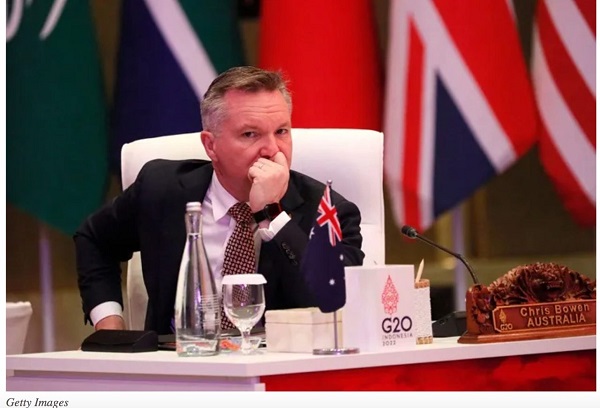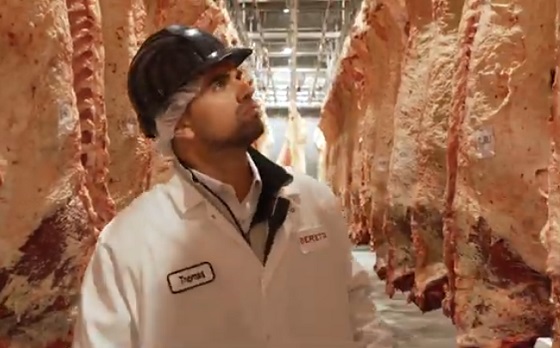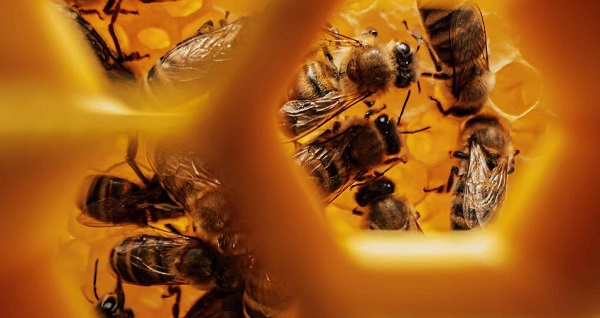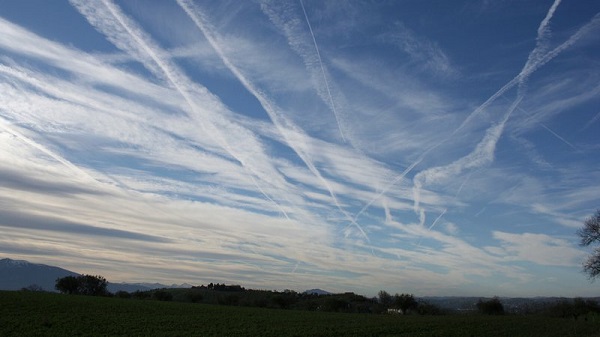Agriculture
Australia ignoring the solution to government-induced malaise

Australian PM Chris Bowen
From the Frontier Centre for Public Policy
By Alan Moran
Conscious of the imperative of self-preservation, European governments and the EU Commission itself have already taken baby steps to dilute and delay carbon emission-abating and economy-crushing agricultural and energy policies.. Not so in Australia
Studying last month’s Davos meeting of the world’s (largely self-appointed) elites, Walter Russell Mead sees an inflection point.
He says that when they listened to Argentinian President Milei promoting free market capitalism, the Davosies’ applause was more than polite clapping. There was a sense that all was not well in the supposed government-planned China, and a recognition that the more hands-on EU governmental approach has resulted in Europe slipping behind the US with its lighter government touch over the economy. This was coupled with a concern that the farmer revolts around Europe reflected a sudden rejection of trust in the establishment. Above all, Ukraine has made the Euro grandees ‘uncomfortably aware of how dependent the global system is on the leadership that only a prosperous and self-confident America can provide’.
Conscious of the imperative of self-preservation, European governments and the EU Commission itself have already taken baby steps to dilute and delay carbon emission-abating and economy-crushing agricultural and energy policies.
Not so in Australia, where governments remain totally focused on reducing the economy’s productive potential.
The Albanese government, under the Svengali and serial ministerial failure of Chris Bowen, has turbocharged carbon abatement programs crippling energy. It has:
- Vastly increased direct and regulatory-enforced expansion of the transmission lines in an attempt to allow wind and solar to work.
- Introduced a requirement for the top 215 businesses to reduce their emission levels by 30 per cent over and above reductions made necessary by the subsidies generally.
- Put in place measures to combat objections to intrusive wind farms and transmission lines.
- Refused to introduce requirements for the rectification of land and safe disposal of the materials used in wind and solar facilities.
- Vastly expanded the budgetary assistance to wind, solar, and hydrogen.
- Introduced costly requirements on firms to identify the emissions of their own activities and of those of their suppliers and customers.
The measures have been put in place by politicians, hardly any of whom have any knowledge of the energy sector, how it works, and what its costs are. Politicians have been pressed in this direction by the so-called experts, a professional elite supported by and bankrolled by subsidy-seekers, who see the global warming con as a means by which they can get paid for promoting particular forms of energy.
But the outcome is already apparent in the loss of competitiveness of our industries. The bellwether is smelting and all three of the major aluminium smelters are now in hospital care, relying on government support to offset the imposts they incur from government penalties on cheap electricity. The distress is also seen in agricultural and mining industries, which in addition to being buffeted by ever-increasing environmental costs, with their prices set globally, are seeing their margins come under pressure.
Every week brings another measure – last week we saw requirements on car retailers to ensure more fuel-efficient – higher cost cars are sold with penalties on sellers that fail to meet these requirements, penalties that will certainly increase the price Australians pay for motor vehicles.
This week, Environment Minister Tanya Plibersek boasted of spending $205 million of taxpayers’ money to buy back another 44 gigalitres of water from Murray irrigators. This is part of a process to divert 2,700 gigalitres per annum (out of 7,000 gigalitres ‘high security’ water available) from productive agriculture to uses designated as ‘environmental’. These measures massively reduce the productivity of the Murray-Darling region, responsible for 35 per cent of the nation’s farm income. They were originally justified to respond to environmental agitators’ spurious claims that irrigation was creating salt infusions, claims that were reinforced during the ‘millennial’ drought of 1997-2008 by specious assertions that climate change would drastically reduce the available water. These original rationales having been disproven, politicians’ and activists’ hostility to productive enterprise have lent the programs an ongoing inertia.
We also saw a new $100 billion a year in additional carbon tax floated by Ross Garnaut and Rod Sims; their study’s funding source was not revealed but the beneficiaries would likely be, in my opinion, subsidy-seeking economy wreckers. While ostensibly rejecting that proposal, the Prime Minister has foreshadowed extensive new decarbonisation spending programs. Nothing is being learned from the collapse of Australia’s nickel mining industry, which cannot compete with overseas mines favoured by the low-cost coal-generated electricity that Australian governments are closing down.
In addition to the current $10 billion a year in subsidies through regulations forcing the use of wind and solar, and billions of dollars spent on revoking the productive use of irrigation water, governments provide huge sums to groups that promote such waste. Unlike squandering through inefficiency that is endemic in government programs, all this spending is aimed at poisoning once highly competitive low-cost industries. Adding to measures that load the dice against employers in workplace relations, it is akin to government forcing the nation to manufacture bombs to be dropped on the people financing them.
Has anybody put the solution more succinctly than Trump-aligned Presidential hopeful, Vivek Ramaswamy? His answer was, ‘Drill. Frack. Merit over “Diversity, Equity, and Inclusion”. Stop paying people to stay at home instead of work. Fire bureaucrats. Shut down corrupt agencies. End lobbying.’
Alan Moran is a noted economist who has analysed and written extensively from a free market perspective focusing on environmental issues, housing, network industries, and energy markets. First published here.
Agriculture
Lacombe meat processor scores $1.2 million dollar provincial tax credit to help expansion

Alberta’s government continues to attract investment and grow the provincial economy.
The province’s inviting and tax-friendly business environment, and abundant agricultural resources, make it one of North America’s best places to do business. In addition, the Agri-Processing Investment Tax Credit helps attract investment that will further diversify Alberta’s agriculture industry.
Beretta Farms is the most recent company to qualify for the tax credit by expanding its existing facility with the potential to significantly increase production capacity. It invested more than $10.9 million in the project that is expected to increase the plant’s processing capacity from 29,583 to 44,688 head of cattle per year. Eleven new employees were hired after the expansion and the company plans to hire ten more. Through the Agri-Processing Investment Tax Credit, Alberta’s government has issued Beretta Farms a tax credit of $1,228,735.
“The Agri-Processing Investment Tax Credit is building on Alberta’s existing competitive advantages for agri-food companies and the primary producers that supply them. This facility expansion will allow Beretta Farms to increase production capacity, which means more Alberta beef across the country, and around the world.”
“This expansion by Beretta Farms is great news for Lacombe and central Alberta. It not only supports local job creation and economic growth but also strengthens Alberta’s global reputation for producing high-quality meat products. I’m proud to see our government supporting agricultural innovation and investment right here in our community.”
The tax credit provides a 12 per cent non-refundable, non-transferable tax credit when businesses invest $10 million or more in a project to build or expand a value-added agri-processing facility in Alberta. The program is open to any food manufacturers and bio processors that add value to commodities like grains or meat or turn agricultural byproducts into new consumer or industrial goods.
Beretta Farms’ facility in Lacombe is a federally registered, European Union-approved harvesting and meat processing facility specializing in the slaughter, processing, packaging and distribution of Canadian and United States cattle and bison meat products to 87 countries worldwide.
“Our recent plant expansion project at our facility in Lacombe has allowed us to increase our processing capacities and add more job opportunities in the central Alberta area. With the support and recognition from the Government of Alberta’s tax credit program, we feel we are in a better position to continue our success and have the confidence to grow our meat brands into the future.”
Alberta’s agri-processing sector is the second-largest manufacturing industry in the province and meat processing plays an important role in the sector, generating millions in annual economic impact and creating thousands of jobs. Alberta continues to be an attractive place for agricultural investment due to its agricultural resources, one of the lowest tax rates in North America, a business-friendly environment and a robust transportation network to connect with international markets.
Quick facts
- Since 2023, there are 16 applicants to the Agri-Processing Investment Tax Credit for projects worth about $1.6 billion total in new investment in Alberta’s agri-processing sector.
- To date, 13 projects have received conditional approval under the program.
- Each applicant must submit progress reports, then apply for a tax credit certificate when the project is complete.
- Beretta Farms has expanded the Lacombe facility by 10,000 square feet to include new warehousing, cooler space and an office building.
- This project has the potential to increase production capacity by 50 per cent, thereby facilitating entry into more European markets.
Related information
Agriculture
Unstung Heroes: Canada’s Honey Bees are not Disappearing – They’re Thriving

Canada’s Bee Apocalypse began in 2008. That was the year the Canadian Association of Professional Apiculturists (CAPA) first reported unusually high rates of winter bee colony losses. At 35 percent, the winter die-off that year was more than twice the normal 15 percent rate of attrition.
“Successive annual losses at [these] levels … are unsustainable by Canadian beekeepers,” the CAPA warned. This set off an avalanche of dire media reports that now appear on a regular basis. Among the many examples over the years: Huge Honey Bee Losses Across Canada” and “Canada’s bee colonies see worst loss in 20 years”. As each of these stories reminds readers, the disappearance of honey bees will doom our food supply, given their crucial role in pollinating crops including canola, soyabeans, apples, tomatoes and berries.
This year the black-and-yellow striped Cassandras are back at work, with headlines shouting “Scientists warn of severe honeybee losses in 2025” and “The Bees are Disappearing Again”. If it’s spring, the bees must be disappearing. Again.
It is, however, mathematically impossible for any species to be in an allegedly continuous and calamitous state of decline over nearly two decades and never actually reduce in number. For despite the steady supply of grave warnings regarding their imminent collapse, Canada’s bees are actually buzzing with life.
In 2007, according to Statistics Canada, there were 589,000 honey bee colonies in Canada,; in 2024, they reached 829,000, just shy of 2021’s all-time high of 834,000. Figuring a conservative summertime average of 50,000 bees per colony, that means there are approximately 12 billion more honey bees in Canada today than when the Bee Apocalypse first hit.
As for beekeepers, their numbers have also been growing steadily, and now stand at 15,430 – the most recorded since 1988. As CAPA’s report acknowledges, “the Canadian beekeeping industry has been resilient and able to grow, as proven by the overall increase in the number of bee colonies since 2007 despite the difficulties faced every winter.”
How is this possible? As is usually the case where there’s a need to be filled, the market holds the answer.
It is true that Canadian honey bees face a long list of threats and challenges ranging from mites and viruses to Canada’s harsh winters. It is also true that they perform a crucial service in pollinating crops, the value of which is estimated at $7 billion annually. However, this underscores the fact that bees are a livestock bred for a particular agricultural purpose, no different from cattle, chickens or pen-raised salmon. They are a business.
And in spite of its alleged status as an environmental totem, the honey bee isn’t even native to North America. It was first imported by European settlers for its honey-making abilities in the 1600s. Since then, it has been cultivated with deliberate commercial intent – allowing it to outcompete native pollinators such as bumble bees and butterflies even though it is poorly suited to the local winter. (This highlights the irony of all those native-plant pollinator gardens virtuously installed in neighbourhoods across Canada that end up supporting an invasive honey bee population.)
The significance of the bee economy means that when a beehive collapses over the winter for whatever reason, beekeepers have plenty of motivation to regenerate that colony as swiftly as possible. While hives can create their own queens over time, this can be a slow process given the cold Canadian climate. The better option is to simply buy a new queen from a warmer country.
In 2024, Canada imported 300,000 queens worth $12 million, mostly from the U.S., Italy, Australia and Chile. That works out to $40 each. In a miracle of nature, each of these new queens can lay up to 2,500 eggs a day, and each egg takes just two to three weeks to reach full maturity as a worker or drone. It is also possible to import entire “bee packages” that include a queen and 8,000 to 10,000 bees.
As a result, even a devastating 50 percent winter loss rate, something that has occurred only rarely in Canada in individual provinces and never nationally, isn’t necessarily fatal to any beekeeping operation. The beekeeper can purchase imported queens in April, split their existing colonies and be back in business by May or June.
And regardless of the honey bee’s apparent difficulties with Canada’s unforgiving weather (efforts are ongoing to breed a hardier Canadian variant), there’s no shortage of bees worldwide. Earlier this year, the German statistical agency reported the global beehive count rose from 69 million in 1990 to 102 million in 2023. Another study looking back to 1961 by New Zealand researchers found the number of honey bee colonies has “nearly doubled” over this time, while honey production has “almost tripled.” As the New Zealand report observes, “Headlines of honey bee colony losses have given an
impression of large-scale global decline of the bee population that endangers beekeeping, and that the world is on the verge of mass starvation.” Such claims, the authors note, are “somewhat inaccurate.” In truth, things have never been better for bees around the world.
Here in Canada, the ability to import queens from other countries, together with their prodigious reproductive capabilities, backstops the amazing resiliency of the bee industry. Yes, bees die. Sometimes in large numbers. But – and this is the bit the headlines always ignore – they come back. Because the market needs them to come back.
If there is a real threat to Canada’s bee population, it’s not environmental. It’s the risk that unencumbered trade in bees might somehow be disrupted by tariffs or similar bone-headed human interventions. Left on their own, bees have no problem keeping busy.
The longer, original version of this story first appeared at C2CJournal.ca
-

 International2 days ago
International2 days agoSecret Service suspends six agents nearly a year after Trump assassination attempt
-

 Bruce Dowbiggin1 day ago
Bruce Dowbiggin1 day agoThe Covid 19 Disaster: When Do We Get The Apologies?
-

 Crime22 hours ago
Crime22 hours agoSweeping Boston Indictment Points to Vast Chinese Narco-Smuggling and Illegal Alien Labor Plot via Mexican Border
-

 Alberta1 day ago
Alberta1 day agoAlberta school boards required to meet new standards for school library materials with regard to sexual content
-

 Business2 days ago
Business2 days agoWEF-linked Linda Yaccarino to step down as CEO of X
-

 Automotive2 days ago
Automotive2 days agoAmerica’s EV Industry Must Now Compete On A Level Playing Field
-

 Environment22 hours ago
Environment22 hours agoEPA releases report on chemtrails, climate manipulation
-

 Business2 days ago
Business2 days ago‘Experts’ Warned Free Markets Would Ruin Argentina — Looks Like They Were Dead Wrong



